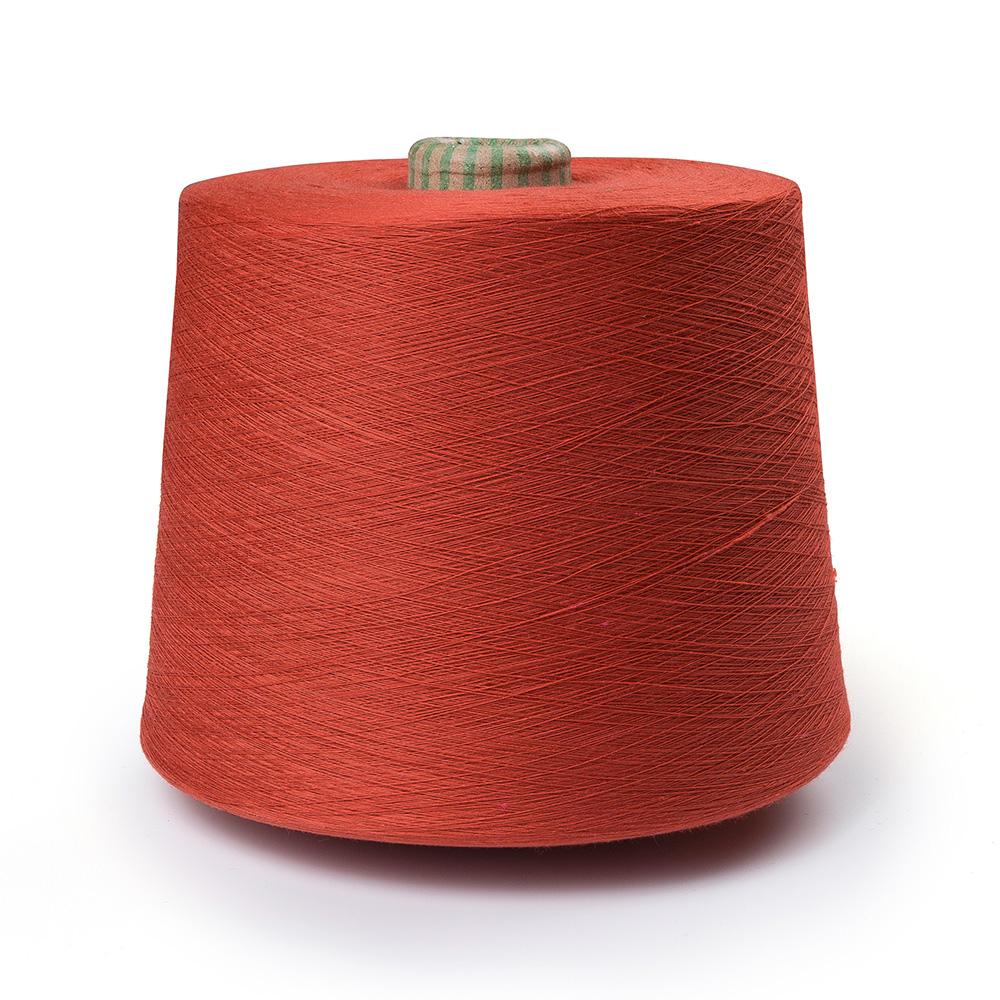If you are interested in some of our products, please feel free to visit our website or contact us for detailed information.

The abrasion resistance of polyester spun yarn, especially in applications with high wear and tear, is influenced by several key factors:
Fiber Type and Quality: The selection of polyester fibers is a nuanced process, with considerations for molecular weight distribution, crystallinity, and extrusion conditions. High-tenacity fibers, characterized by their robust molecular structure, contribute significantly to abrasion resistance. Rigorous quality control measures throughout the fiber production process, including polymerization and spinning, ensure uniformity and consistency in fiber properties, further enhancing the overall durability of the spun yarn.
Yarn Structure: Yarn structure optimization involves a multifaceted approach. Beyond twist level, factors such as drafting, drafting zone temperature, and spindle speed during spinning play pivotal roles. Achieving a balance between fiber entanglement and alignment is essential for creating a compact yarn structure. This intricacy ensures that the yarn not only resists abrasion through increased twist but also minimizes internal friction, contributing to superior wear resistance.
Yarn Fineness: The pursuit of finer polyester fibers demands a meticulous examination of the spinning process, including the use of advanced spinning technologies and precise control of spinning parameters. While finer fibers can promote a smoother yarn surface, meticulous attention must be paid to fiber strength. The challenge lies in optimizing fineness without compromising the tensile strength of the yarn, thereby ensuring that the benefits of reduced friction are not outweighed by a sacrifice in overall durability.
Blending with Other Fibers: Blending strategies involve a sophisticated understanding of the synergy between polyester and other fibers. The blending process necessitates a comprehensive analysis of fiber compatibility, mechanical properties, and processing parameters. This intricate balancing act aims to capitalize on the strength of polyester while leveraging the specific characteristics of companion fibers. Strategic blending not only enhances abrasion resistance but also addresses other performance criteria, making it a nuanced solution for applications demanding high wear and tear resistance.
Yarn Lubrication: Yarn lubrication is a science in itself, requiring a deep understanding of polymer behavior and friction dynamics. Lubrication strategies involve the selection of appropriate lubricants, their dispersion methods, and the control of lubricant levels during spinning. The goal is to create a lubricious environment that minimizes fiber-to-fiber friction, thereby reducing heat generation and potential damage during abrasion. This meticulous lubrication process is crucial in achieving optimal abrasion resistance without compromising other yarn properties.
Fabric Construction: Fabric construction represents a pivotal stage in translating yarn properties into tangible performance characteristics. The optimization of weave or knit structures involves intricate considerations, including sett, picks per inch, and yarn count. Tighter weaves or knits, achieved through meticulous control of these parameters, contribute to increased abrasion resistance by minimizing the relative movement between individual yarns. Tailoring fabric construction to the specific demands of the application ensures that the full potential of the abrasion-resistant yarn is realized.
Finish and Coating: The application of finishes or coatings introduces an additional layer of complexity to yarn development. The selection of finishing agents involves a detailed evaluation of their chemical compatibility with polyester, their impact on surface characteristics, and their effectiveness in providing a protective barrier against abrasion. The challenge lies in achieving a delicate balance between enhanced abrasion resistance and the preservation of other essential properties. This demands a nuanced approach to finish formulation and application techniques to ensure optimal performance across a spectrum of applications.
Application-Specific Considerations: Customizing abrasion resistance for specific applications necessitates a holistic understanding of the end-use environment. Factors such as temperature, humidity, types of abrasives encountered, and anticipated mechanical stresses all play a role in tailoring polyester spun yarn to meet unique challenges. Collaborative partnerships with end-users, coupled with ongoing research and development efforts, provide invaluable insights for optimizing yarn properties based on real-world application demands. This iterative process ensures that the final product not only meets but exceeds the expectations set by the end-user.
35D36F High Tenacity high quality dyed color yarn 100% polyester spun yarn for socks

35D36F High Tenacity high quality dyed color yarn 100% polyester spun yarn for socks


 English
English Español
Español








